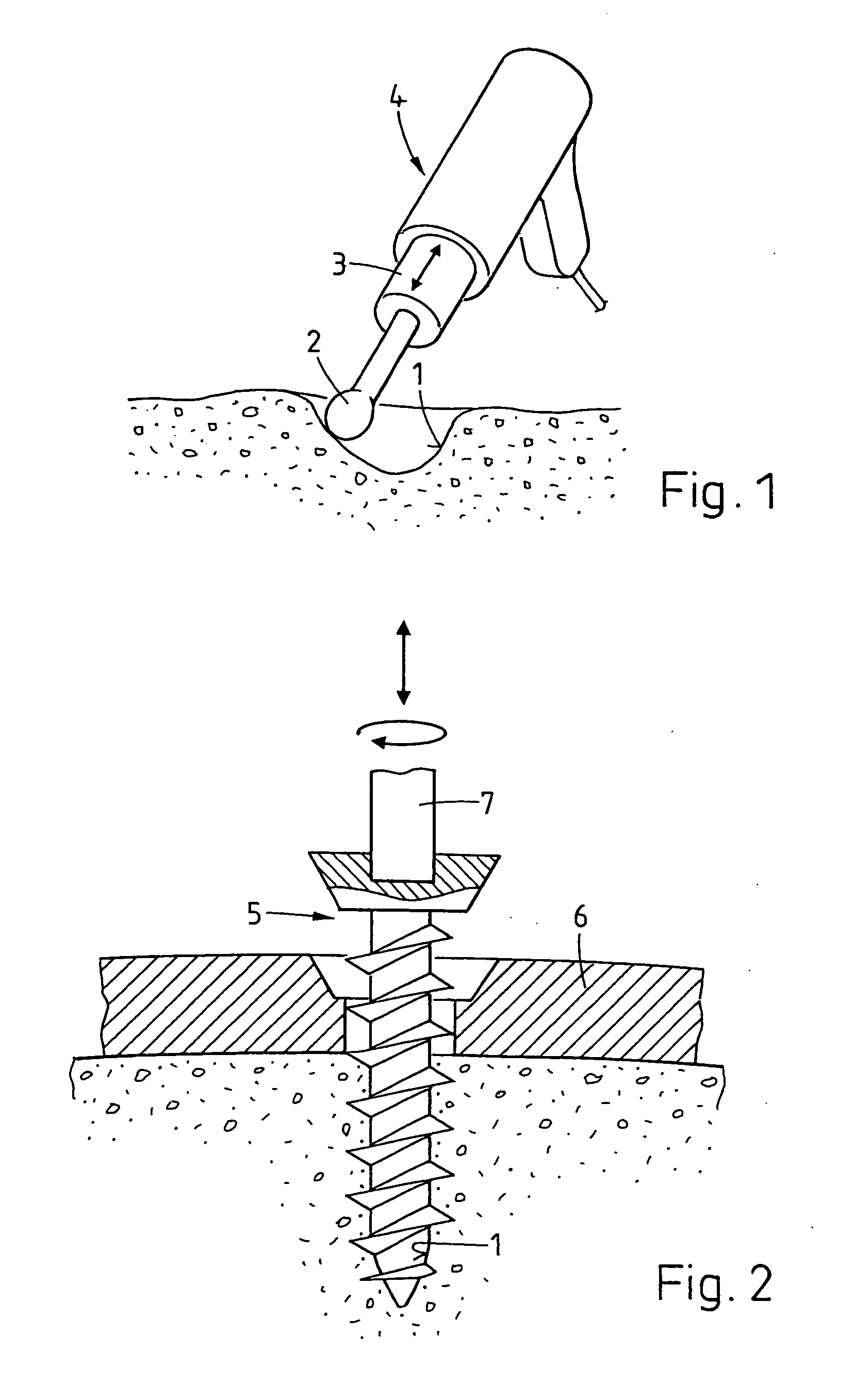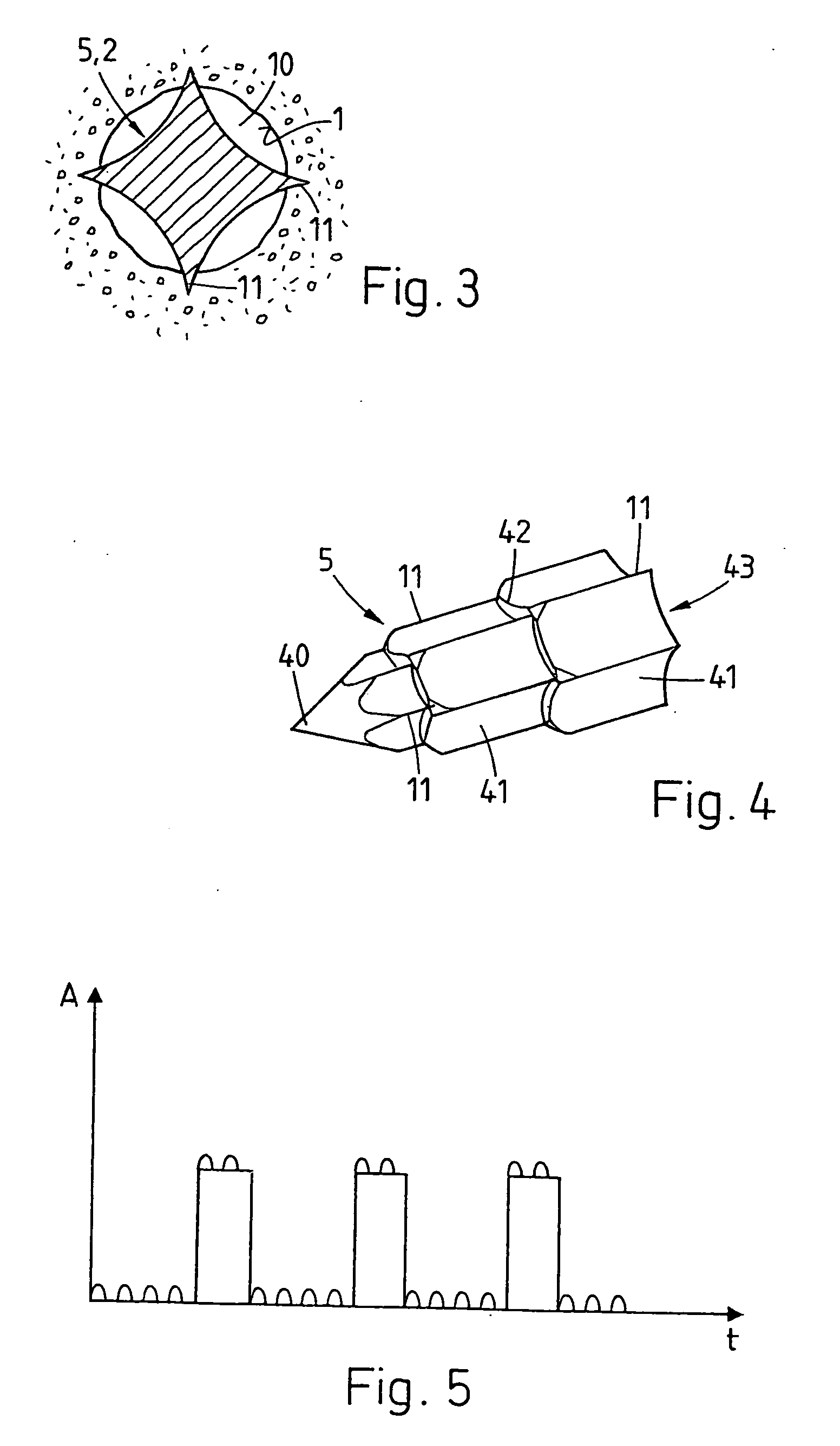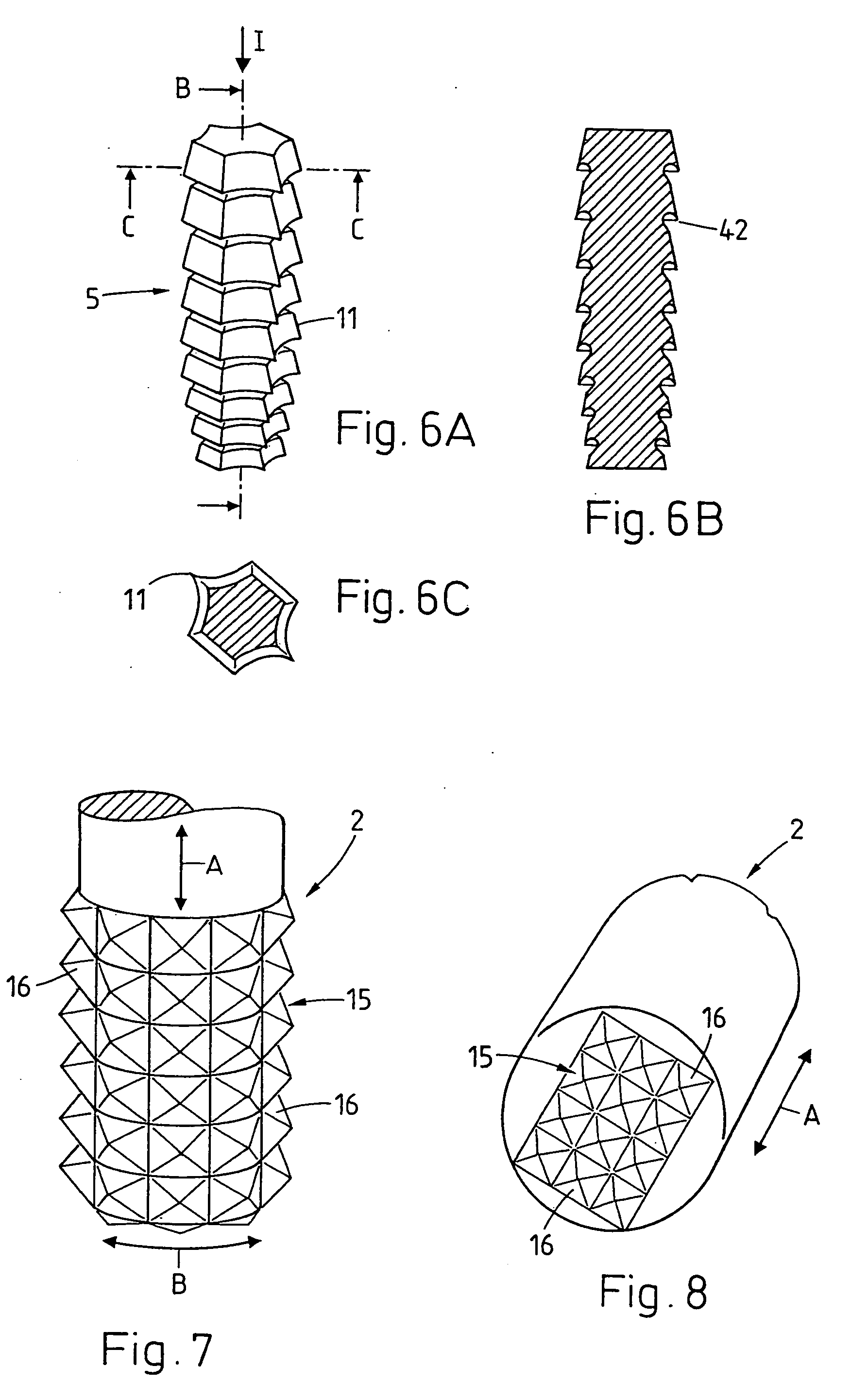Method for promoting tissue regeneration on wound surfaces as device and treatment instrument or implant for carrying out method
a tissue regeneration and wound surface technology, applied in the field of medical technology, can solve the problems of inability to adapt to minimal-invasive (endoscopic) surgery, ineffective treatment against undesired cells, and the opening created with the help of the filling element cannot represent a tight seat for the filling element, etc., to achieve high biochemical activity, good results, and increase the densities of vital cells
- Summary
- Abstract
- Description
- Claims
- Application Information
AI Technical Summary
Benefits of technology
Problems solved by technology
Method used
Image
Examples
Embodiment Construction
[0028]FIG. 1 shows the treatment of a wound surface 1 of a tissue wound created by surgery, injury or disease, for example a wound in a bone created by removal of a tumour. The treatment essentially comprises contacting the wound surface 1 to be treated with a treatment instrument 2, wherein the instrument 2 is formed as an oscillation body and is connected to an oscillation drive directly or via one or more further oscillation bodies 3 (booster, transmission element) which transform the oscillation direction and / or amplitude. The oscillation drive and the further oscillation bodies for example are components of a hand device 4, for example a hand-guided ultrasonic device. The oscillation drive for example comprises a stack of piezoelements which are set into mechanical oscillation by an electrical drive frequency. The oscillation drive and the treatment instrument 2 and, where appropriate, a further oscillation body or further oscillation bodies (booster, transmission element etc.)...
PUM
 Login to View More
Login to View More Abstract
Description
Claims
Application Information
 Login to View More
Login to View More - R&D
- Intellectual Property
- Life Sciences
- Materials
- Tech Scout
- Unparalleled Data Quality
- Higher Quality Content
- 60% Fewer Hallucinations
Browse by: Latest US Patents, China's latest patents, Technical Efficacy Thesaurus, Application Domain, Technology Topic, Popular Technical Reports.
© 2025 PatSnap. All rights reserved.Legal|Privacy policy|Modern Slavery Act Transparency Statement|Sitemap|About US| Contact US: help@patsnap.com



